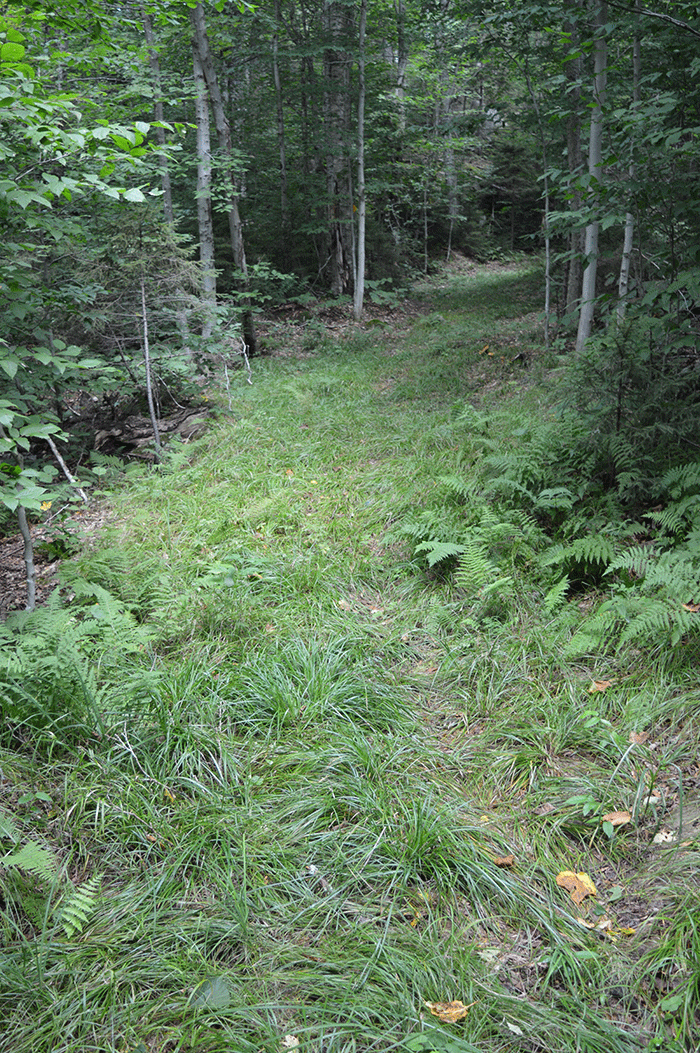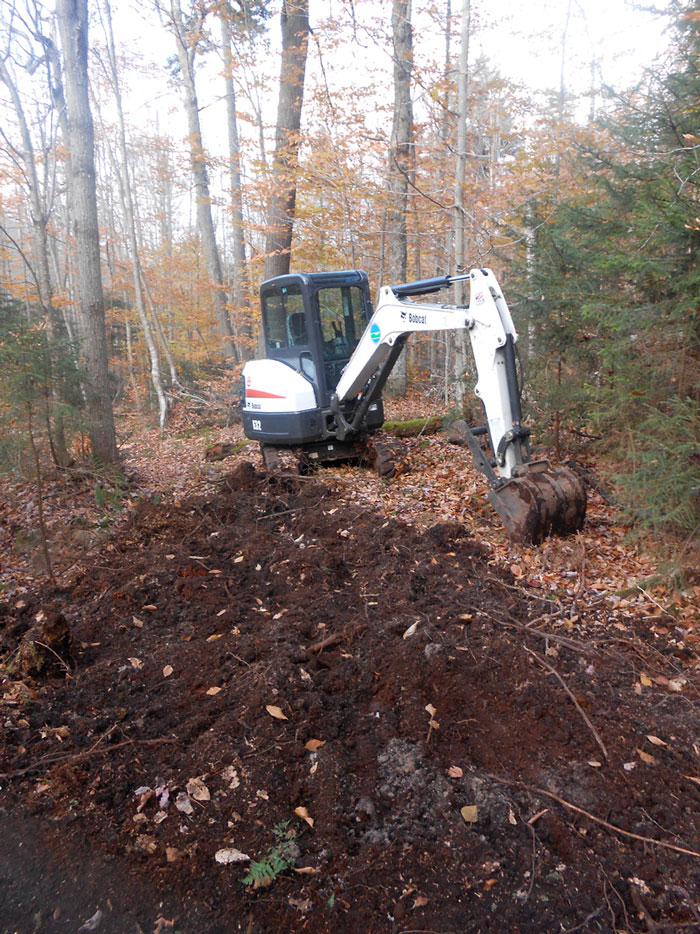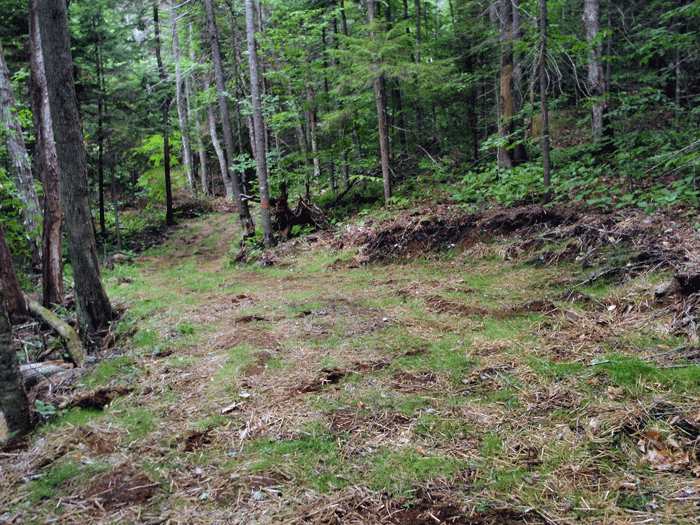Protect the Adirondacks will defend the Appellate Division ruling that the State is appealing, which held that the amount of tree cutting by the State on the Forest Preserve violated Article 14, Section 1, and will make a cross-appeal challenging the part of the court’s decision that held that terrain alterations on the Forest Preserve from class II snowmobile trail construction complied with Article 14.
Protect the Adirondacks plans to cross-appeal on the July 3rd ruling by the Appellate Division, Third Department, on its lawsuit challenging the tree cutting and terrain alterations on the Forest Preserve by state agencies. The Department of Environmental Conservation (DEC) was building a network of wide, road-like, class II community connector snowmobile trails in the Adirondack Park. The court issued a mixed decision in July. It ruled in favor of Protect the Adirondacks when it held that the cutting of over 25,000 trees on the Forest Preserve violated Article 14, Section 1, of the NYS Constitution. However, the court ruled in favor of state agencies in holding that the construction practices used to clear, bulldoze and grade these trails did not violate the famous forever wild provision of Article 14.
The State announced last week that it planned to take an appeal on the tree cutting issue. In light of that action, Protect the Adirondacks decided to file a cross-appeal on the forever wild issue. Both sides have filed notices of appeal, and it is likely that briefs will be filed by the end of the year. The appeals will be heard by the NYS Court of Appeals, the state’s highest court.
In July 2019, the Appellate Division, Third Department, reversed a lower court ruling issued in 2017. Protect the Adirondacks had challenged the constitutionality of cutting more than 25,000 trees to build over 34 miles of new snowmobile trails in the Forest Preserve. The lawsuit was started in 2013, injunctions against further tree cutting were granted in 2016, and a bench trial was held in state Supreme Court in 2017.

Community connector class II snowmobile trail become grassy corridors through the forest, which completely change the forest character and ecology.
Article 14, Section 1, of the New York Constitution, states in relevant part that “[t]he lands of the state, now owned or hereafter acquired, constituting the Forest Preserve as now fixed by law, shall be forever kept as wild forest lands. They shall not be leased, sold or exchanged, or be taken by any corporation, public or private, nor shall the timber thereon be sold, removed or destroyed.”
“Protect the Adirondacks will vigorously defend the Appellate Division’s ruling that found that cutting over 25,000 trees violated the state Constitution’s prohibition on destroying timber on the Forest Preserve” said Peter Bauer, Executive Director of Protect the Adirondacks.
The Appellate Division’s decision on that issue focused on two central points that were contested during the 2017 trial: (1) that the level of tree cutting by the State to build class II trails exceeded the level of tree cutting proposed in other State actions that were contested in court in prior decisions (Association, 1930; Balsam Lake, 1993) regarding Article 14, Section 1; and (2) That, contrary to the State’s position, the framers of the state Constitution’s Forest Preserve clause did not limit the protection against tree cutting to only large, merchantable “timber;” that the use of the word “timber” in its historic context included all trees regardless of size; that small diameter trees, which can often be 75 years old or older, are ecologically important to the functioning of the forest ecosystem and must be protected from State management actions in the Forest Preserve.
The Appellate Division decision stated:
We agree with Supreme Court’s determination, based on the expert historian’s testimony as well as other evidence, that the use of the word “timber” in the constitutional provision at issue is not limited to marketable logs or wood products, but refers to all trees, regardless of size. Although tree size and maturity may be considered in determining whether a proposed project’s tree cutting is substantial or material, plaintiff presented expert testimony debunking the assumption that smaller trees are necessarily young or immature; some forest trees measuring less than three inches DBH can be more than 100 years old, and smaller mature trees play an important role in the continuing ecology of the forest. The court generally accepted the tree counts proffered by plaintiff, including for trees less than three inches DBH. Accepting those factual findings, approximately 25,000 trees either had been or would be cut to construct the trails.
. . .
Although this project did not involve clear-cutting or the removal of a large swath of trees (compare Association for Protection of Adirondacks v MacDonald, 253 NY at 236), but instead necessitated destruction of narrow corridors of trees for many miles, we need to consider the entire project when determining its effects. The destruction of a substantial number of trees can be problematic whether those trees were together or spread out along one or more portions of the Forest Preserve. For example, the construction of these trails required the destruction, on average per mile, of over 200 trees at least three inches DBH and approximately 925 trees of all sizes. It would be anomalous to conclude that destroying 925 trees per mile of trails, or approximately 25,000 trees in total, does not constitute the destruction of timber “to a substantial extent” or “to any material degree” (id. at 238; see 1954 Ops Atty Gen 157 [concluding that the constitutional provision prohibits relocating a portion of existing highway in the Forest Preserve that would involve the cutting of approximately 5,000 trees]). Thus, the construction of the Class II trails resulted in, or would result in, an unconstitutional destruction of timber in the Forest Preserve.
“Protect the Adirondacks is cross-appealing because of overwhelming evidence at trial that the dramatic changes to the Forest Preserve caused by building 12-20 foot wide road-like class II trails that are graded and flattened are destroying the wild forest nature of the affected lands, in violation of the Forever Wild clause of Article 14. These trails become grassy fields cutting through the forest that disrupt the ecology of the Forest Preserve,” said Peter Bauer.

Class II community connector snowmobile trails are designed and constructed in ways far different than any other type of trail on the Forest Preserve. Long stretches of these trails are graded and flattened with excavators.
The Appellate Division’s decision has already forced state agencies to revise their plans for activities that involve tree cutting on the Forest Preserve. Dave Winchell, of DEC Region Five, released the following statement on behalf of DEC: “Stewardship projects that involve tree cutting planned for this year are being reassessed in light of the court decision that limits tree cutting on the Forest Preserve. DEC is reviewing the decision and considering its options going forward.”
It is the position of Protect the Adirondacks that the Appellate Division’s decision upheld the preexisting limit on tree cutting that is found in the state Constitution, and that DEC should reassess its plans, to bring them into compliance with the 125 year-old constitutional mandate that the trees in the Forest Preserve, and the wild forest nature of those lands, must be protected.






